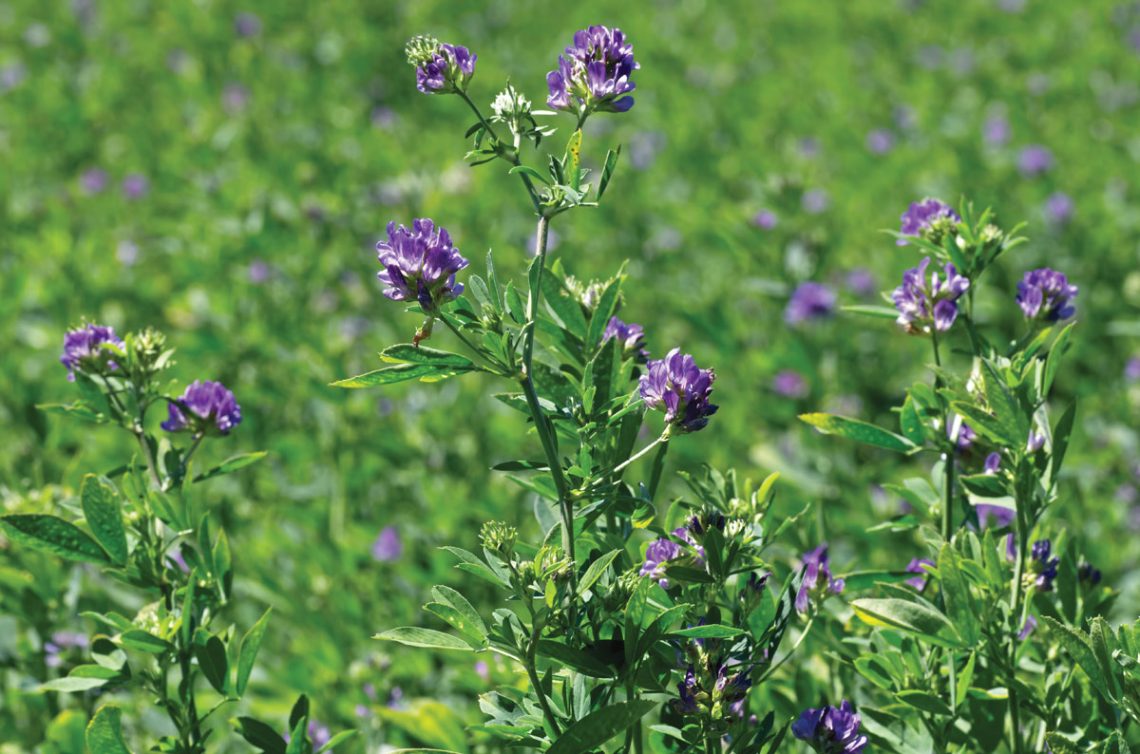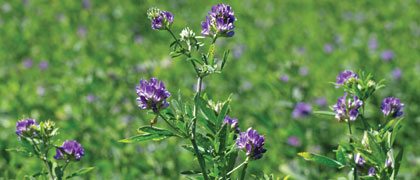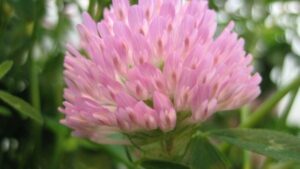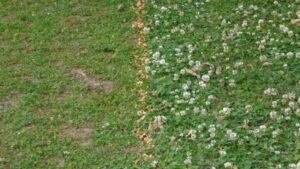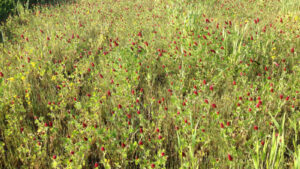
Researchers shift their attention below ground to help take crops to the next level, while improving sustainability.
Known to reduce the need for external inputs for fertility, reduce weed and pest pressure on cash crops, control soil erosion and improve water quality, increase biodiversity and positively impact soil health, cover crops are seeing a surge of interest, not only from farmers but also from seed companies.
As farmers have increased the number of acres in continuous crop cycles, some of those soil nutrients are becoming depleted. Historically, not much attention has been given to what’s in the soil, beyond the essential nutrients, and those in the industry are learning that they really need to — that’s where cover crops come into play.
Soil health is key to feeding some 9 billion people in 2050, according to Krysta Harden, deputy secretary for the U.S. Department of Agriculture.
Companies that have traditionally been focused on corn, soybeans and wheat are starting to inquire about how they might be able to use cover crops for the benefit of their customers.
Jason Weller, Natural Resources Conservation Service chief (NRCS), says the country is losing some of its best agricultural land to development, including more than 43 million acres during the past 30 years.
“We need to improve soil health,” Weller says, explaining that the four tenants to soil health are minimizing soil disturbance, keeping soil covered, energizing the soil with plant diversity and maximizing the living roots to feed the biology in the soil.
“Cover crops cover those four tenants,” Weller says, noting that cover crops can increase soil organic matter (SOM) and a high SOM percentage can hold 18 times to 20 times its weight in water-holding capacity.
“Just a 1 percent increase in SOM in the top 6 inches of soil can hold upwards of 27,000 gallons of water per acre,” Weller says.
There’s an opportunity to do some great things after a crop has been harvested when the land normally sits fallow, says Jerry Hall of Grassland Oregon, which launched its new balansa clover this past summer.
Called FIXatioN, the balansa clover is a small-seeded annual legume that features rapid germination and vast quantities of biomass. Individual plants can exceed 10 feet in length; however, the plant structure is only able to support 3 feet of vertical growth.
Grassland Oregon’s research shows that the cover crop creates a large amount of nitrogen for the following cash crop. Unlike some nitrogen-producing crops that use up the nitrogen they make, balansa clover leaves it in the soil for the next crop to use.
“We’re very excited about FIXatioN,” Hall says. “Traditionally balansa clover has not been very cold tolerant. It’s primarily been grown in the southern U.S. and a few other countries. This clover creates a lot of nitrogen for the following crop and creates very deep channels in the soil, top growth so you get that weed suppression and habitat for wildlife.”
FIXatioN, which has been bred to be more cold tolerant, performs best when it’s fall seeded and has been proven to withstand snow covering or temperatures as low as 5 degrees Fahrenheit without snow. It also performs in acid and alkaline soils, as well as waterlogged soils.
A source of protein for livestock, the balansa clover yields crude protein levels ranging from 22 percent to 28.4 percent with relative feed values as high as 277.
“As the industry starts to think about how to best invest in the soil and sustain it for future generations, we’ve got great benefits to talk about,” Hall says. In looking at what cover crops fit into a farm or company’s crop mix, it really depends on your individual goals — nutrient management, erosion control and soil health. It also depends on the region, the crop and the time of year you plant and harvest.
Grassland Oregon focuses on the ABCs of cover crops — affordable, beneficial and complementary. “It needs to be affordable,” Hall says. “They can’t break the bank. Are they beneficial? You need to have clear and measurable results. And they need to be complementary to your cropping cycle. It has to be compatible with what’s already being done.”
The focus on soil health has renewed interest in cover crops.
Select the Right Species
DuPont Pioneer is one company that’s been supportive of farmers integrating a winter cover crop into corn and soybean cropping systems. While DuPont Pioneer recognizes the benefits of cover crops, the company also cautions farmers that planting cover crops can add new management challenges and risks.
“While some cover crop benefits can stand out in particular management situations or years, most are realized over time as their ongoing use improves soil quality and function,” says Andy Heggenstaller, DuPont Pioneer agronomy research manager. “Cover crops are best viewed as a long-term investment in soil productivity.”
The most commonly used cover crops fall into one of three broad groups — grasses, legumes and brassicas.
According to Heggenstaller, grasses are best suited for scavenging soil nutrients, especially nitrogen; preventing soil erosion; producing large amount of biomass that can help to increase soil organic mater; and suppressing weeds. He says the most common grasses for corn and soybean cropping systems are winter cereals, such as rye, wheat, barley and triticale. These can be planted in late summer through late fall.
However, Heggenstaller says some growers prefer non-winter-hardy cereals such as oats, which establish quickly in the fall, but winterkill and leave behind little residue to manage in the spring. Another option is annual ryegrass, which should be planted by mid-September in most locations. Annual ryegrass produces a large shallow root biomass and leaves little residue in the spring — a good fit in no-till systems.
Known for their ability to fix nitrogen, Heggenstaller shares that legumes are valued as a cover crop. Popular legumes include hairy vetch, field pea, lentil, crimson clover, red clover and berseem clover.
“To survive the winter, most legumes must be planted in early summer through early fall,” he says. “Because the amount of biomass produced by legumes is directly proportional to the amount of nitrogen being produced, there’s often a trade-off between early corn planting and waiting for more biomass production by the legume.”
Brassicas are known for their ability to produce a large taproot and help break up soil compaction. They should be planted in early summer through early fall.
Many brassica cover crops winterkill in locations with subfreezing temperatures, which accelerates residue decomposition in the spring. Heggenstaller says the most common brassicas include canola, mustards, forage radish and turnips.
There’s a great deal emphasis on the importance of cover crops and the role they can play in helping farmers to feed the 9 billion people by 2050.
Just this year, philanthropist Howard G. Buffet and NRCS conservation agronomist Ray Archuleta announced an initiative to increase the 2 million to 3 million acres of cover crops planted in the U.S. in 2013 to about 20 million acres by 2020.
Julie Deering


